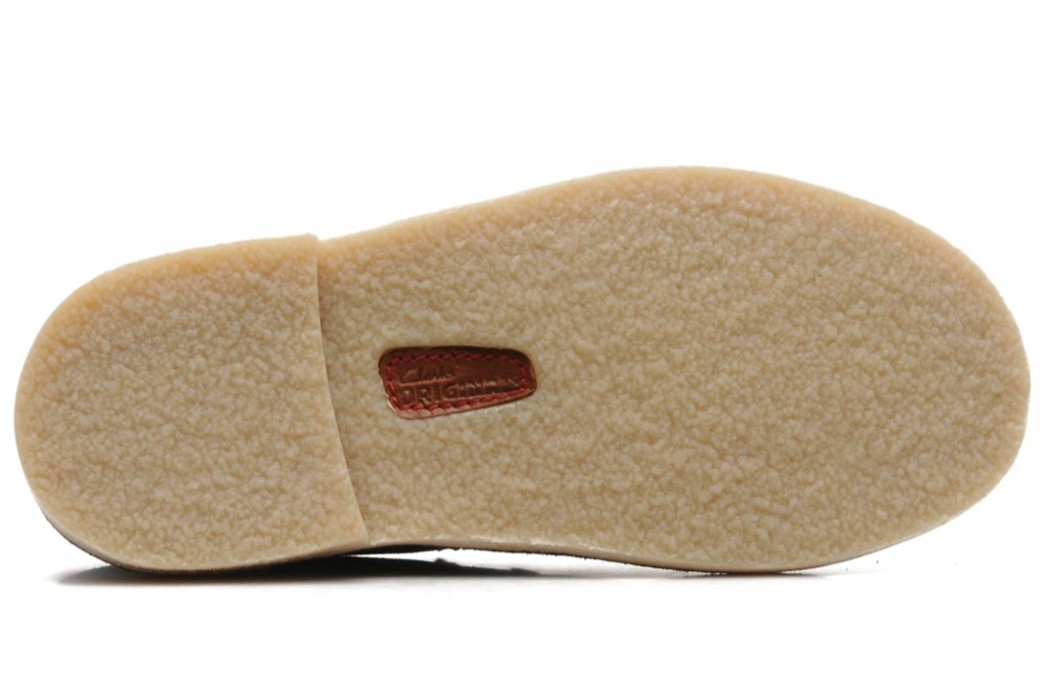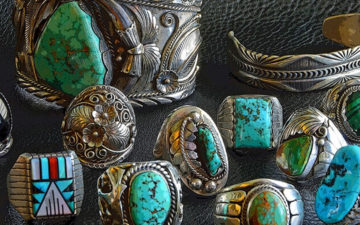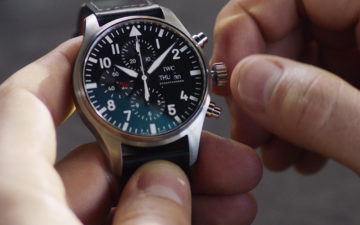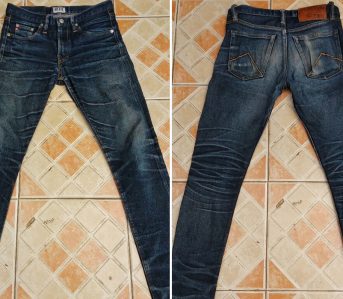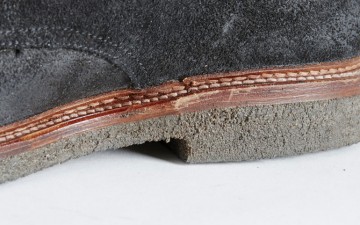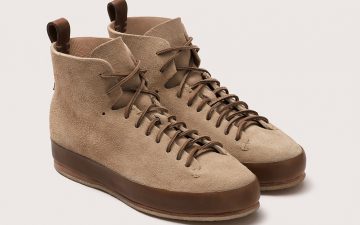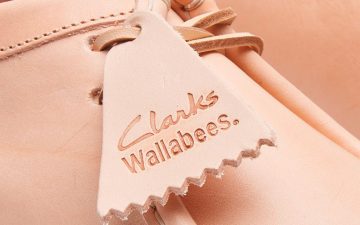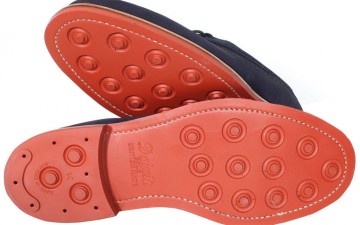In the shoe and boot world, leather and hard rubber soles are commonplace, but a softer, less common variant appears from time to time—Crepe Rubber. This crinkly, cushioning material is famous for appearing on the sole of the iconic Clarks Desert Boot, and many brands still use it today for a softer sole.
What is Crepe Crepe Rubber?
Crepe, or Plantation Rubber, is a natural material that’s predominantly made from latex tapped from trees like the Pará rubber tree. After being harvested in liquid form from the tree, the raw latex is then coagulated to form a semi-solid substance, and then crushed, pressed, and rolled into sheets using a series of machines. Now a solid material, the sheets of Crepe Rubber are then sent to manufacturers—such as Clarks or Yuketen—to be cut into soles for shoes and boots.
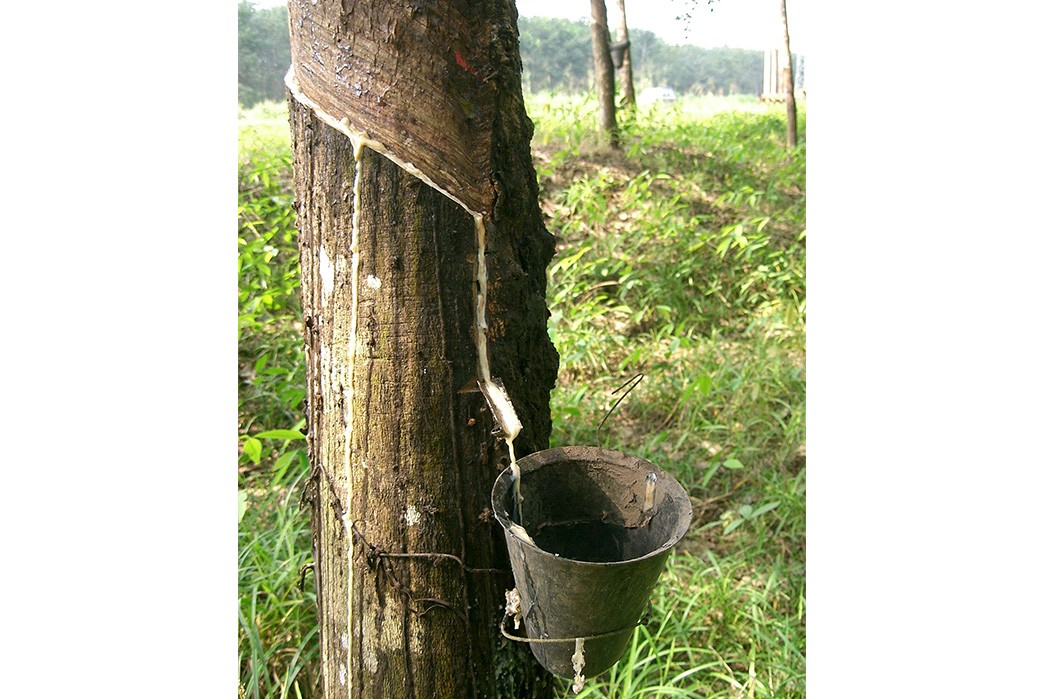
There are other types of crepe rubber available that utilize slightly different production methods, such as Estate Brown Crepe and Pale Latex Crepe, but the core process of coagulating latex remains in most variants. Crepe Rubber is often sweet-smelling and crinkly in appearance, but textures and composition can vary from sole to sole. Some Crepe Rubbers can be stiff and almost as hard as leather sole upon purchase—requiring some breaking in—while others will be softer and provide more traction form the get-go.
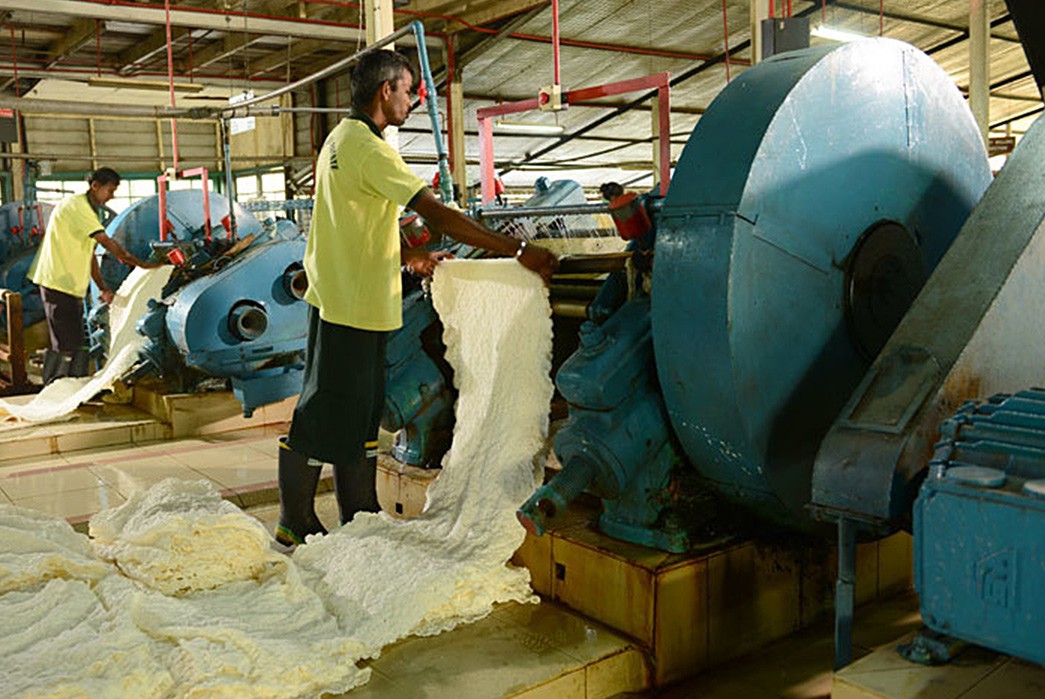
Image via Kelani Valley Plantations
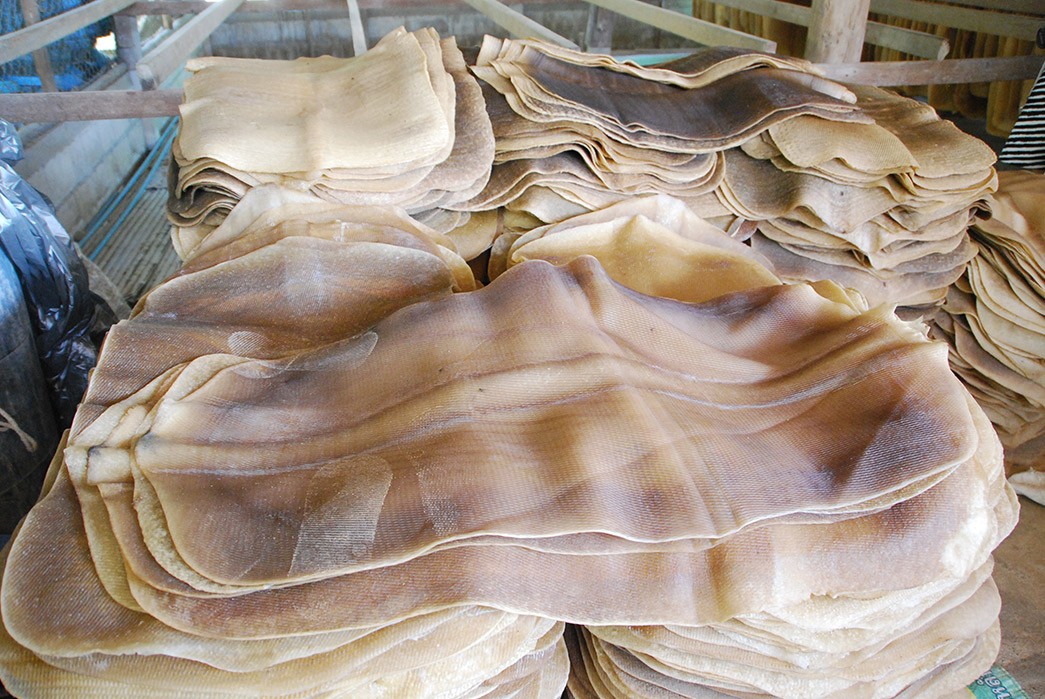
The Pros and Cons of Crepe Rubber
Pros
- Affordability — Crepe rubber has a relatively low production cost, which in turn can lower the cost of products that use the material.
- Comfort — As it softens more and more with each wear, the material provides excellent traction and cushioning for your feet. Some hail Crepe soles as the most comfortable, and brands often add a crepe sole their mainstay models for a more comfortable option.
- Sustainability — Tapping rubber does not harm trees. In fact, a single tree can be tapped regularly for up to 40 years, and produce up to 19 pounds of latex rubber every year.
Cons
- Cleaning — Crepe rubber soles can become dirty very easily due to their abrasive nature, and once they’ve been marked, it can be extremely difficult to restore the rubber back to its original color. You may be able to remove some surface marks, but the sticky Crepe retains dirt, making discoloration nearly impossible to reverse.
- Resoling — Many Crepe Soles are not replaceable, or indeed repairable.
- Durability — Crepe rubber will eventually break down if frequently worn on hard, rough surfaces like concrete. The longevity of the sole will depend on how thick it has been cut, however.
Iconic Usage of Crepe Rubber Soles
Clarks Desert Boot
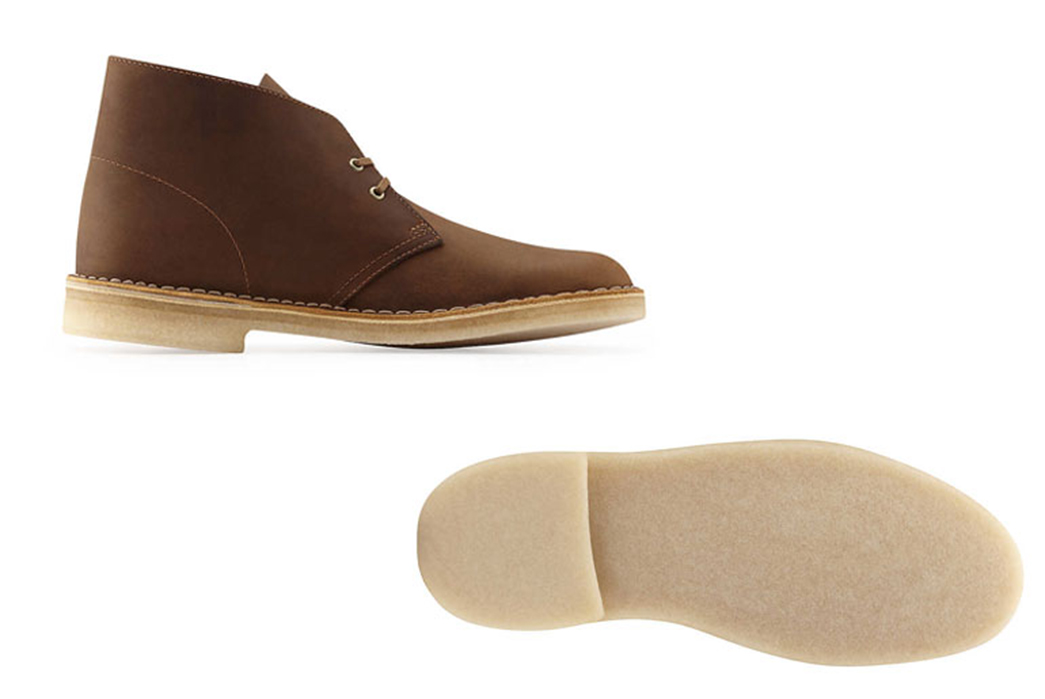
Originally released in 1949, the Clarks Desert Boot was inspired by soldiers stationed in Burma, who had obtained Crepe-soled boots from local merchants. An ankle-high boot traditionally made up in suede or leather, the Desert Boot features a heeled Crepe Sole and remains as one of the most iconic shoes of all time.
$119 at End Clothing.
Yuketen Angler Moc
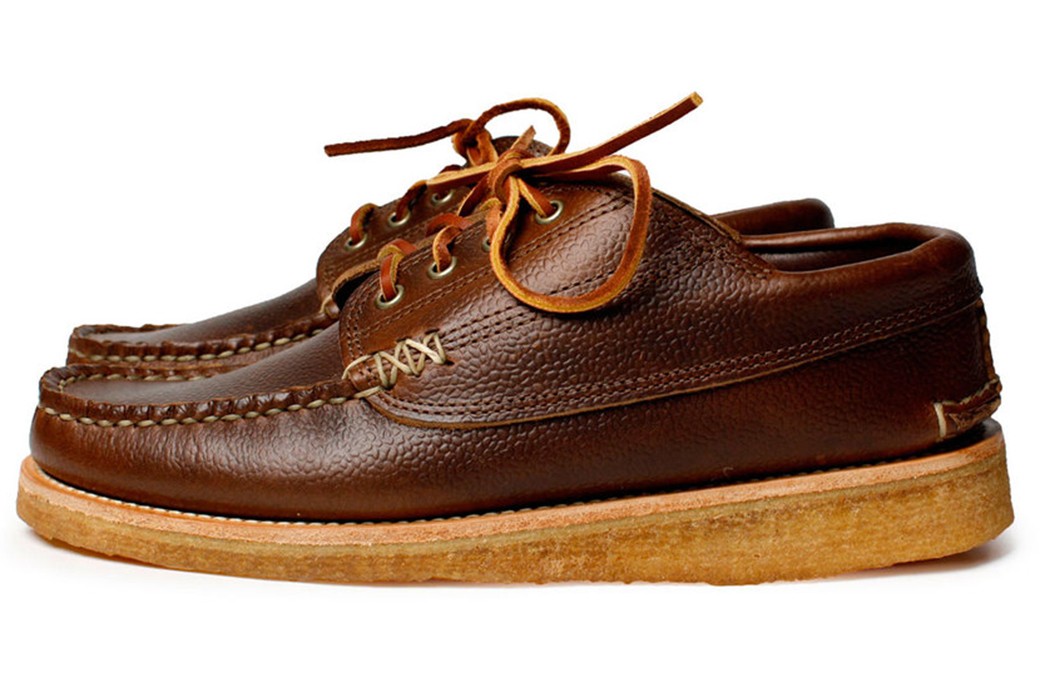
The Angler Moc is one of Yuketen’s mainstay models. It features a hand stitched moccasin-style leather upper, leather laces, and a thick, wedged Crepe rubber sole with stitch-down construction.
$440 at Yuketen.
Common Projects Chelsea Boot
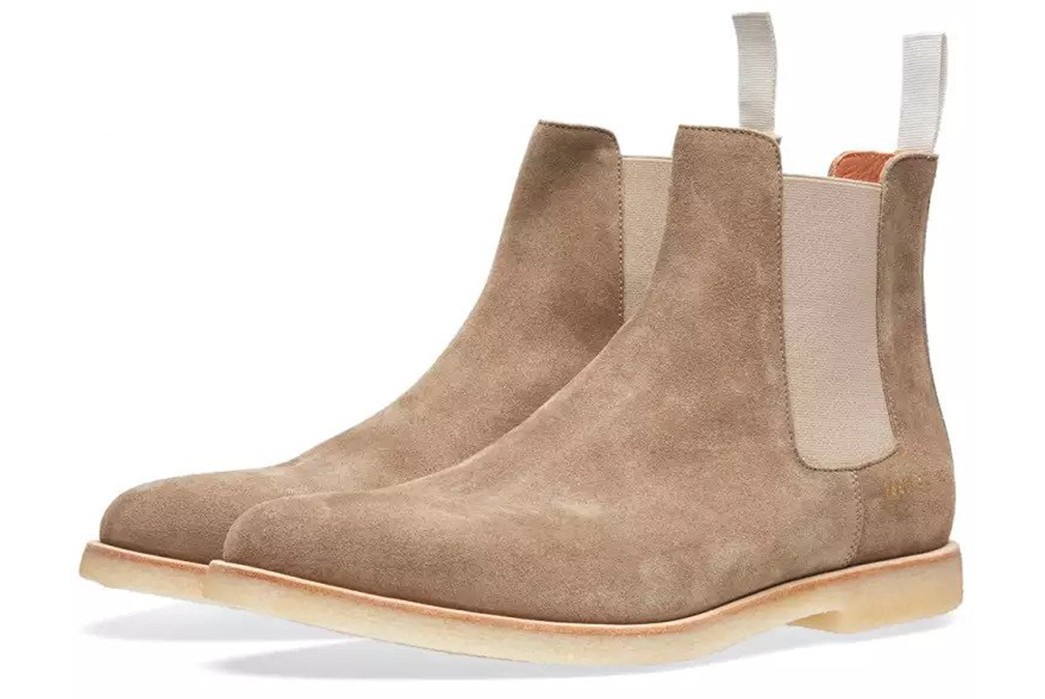
Italian footwear label Common Projects uses a natural Crepe rubber sole on their iteration of the classic Chelsea Boot. With elasticated side gussets and a handsome suede upper, the heeled crepe sole provides extra traction and comfort to this iconic silhouette.
$345 at End Clothing.

